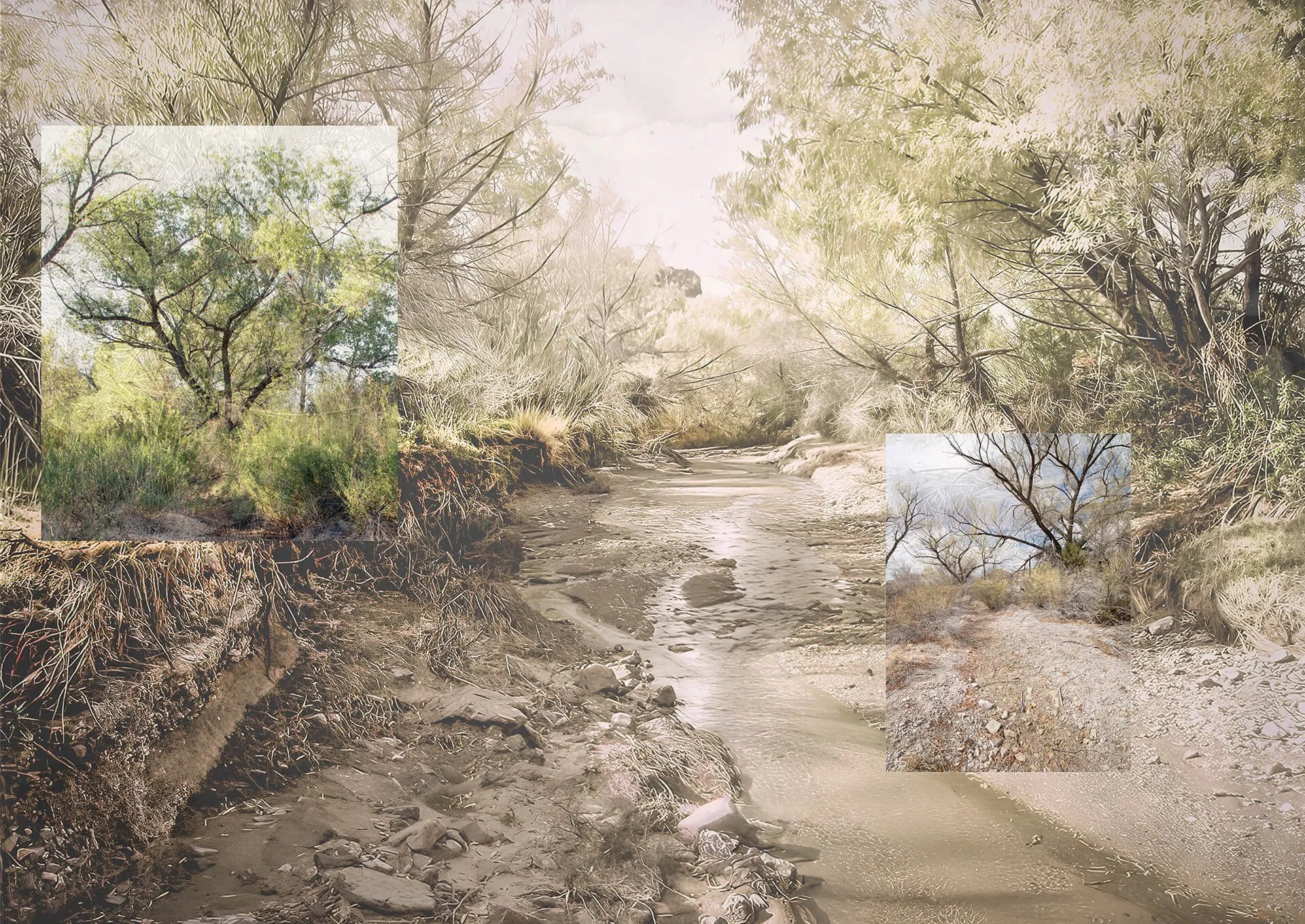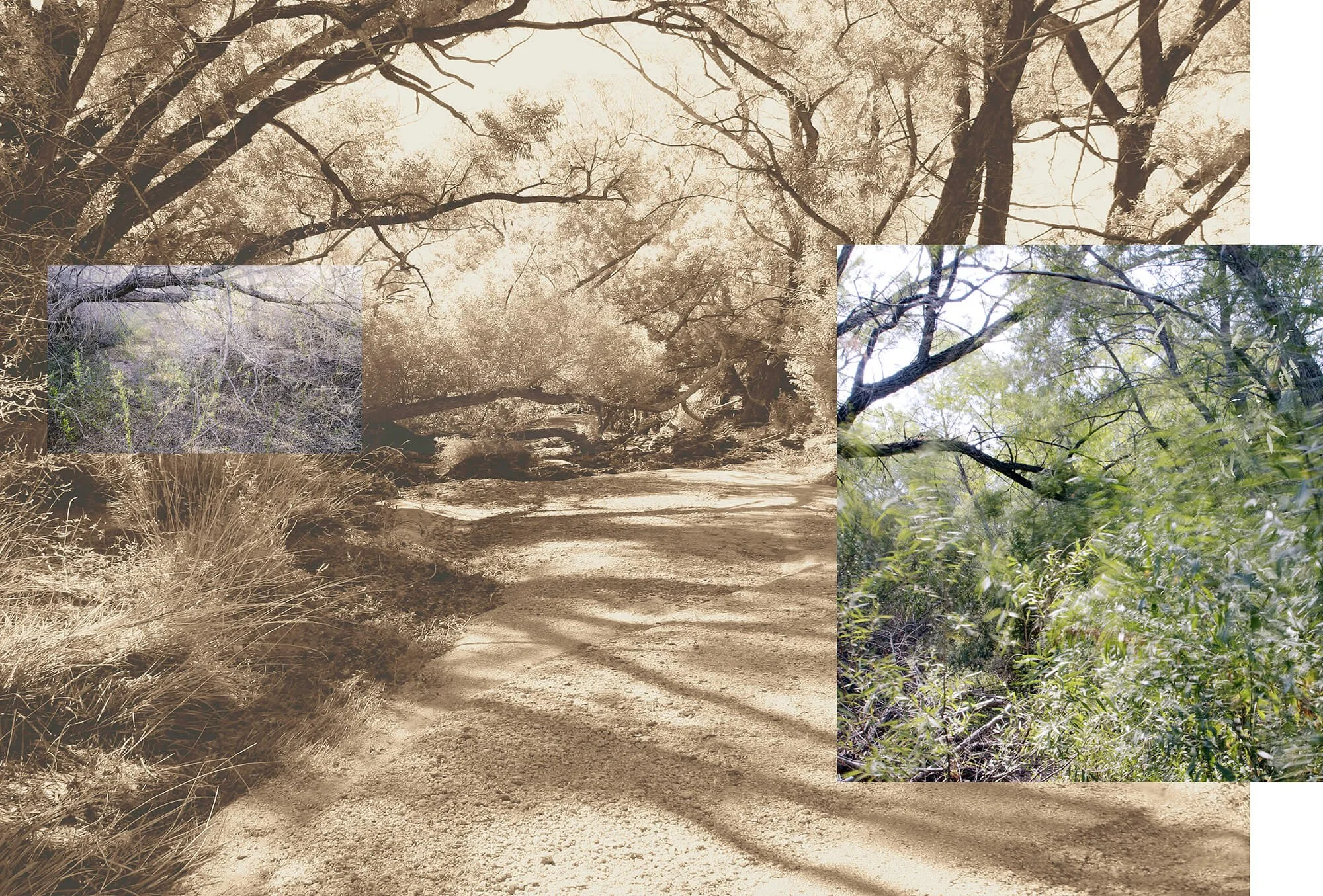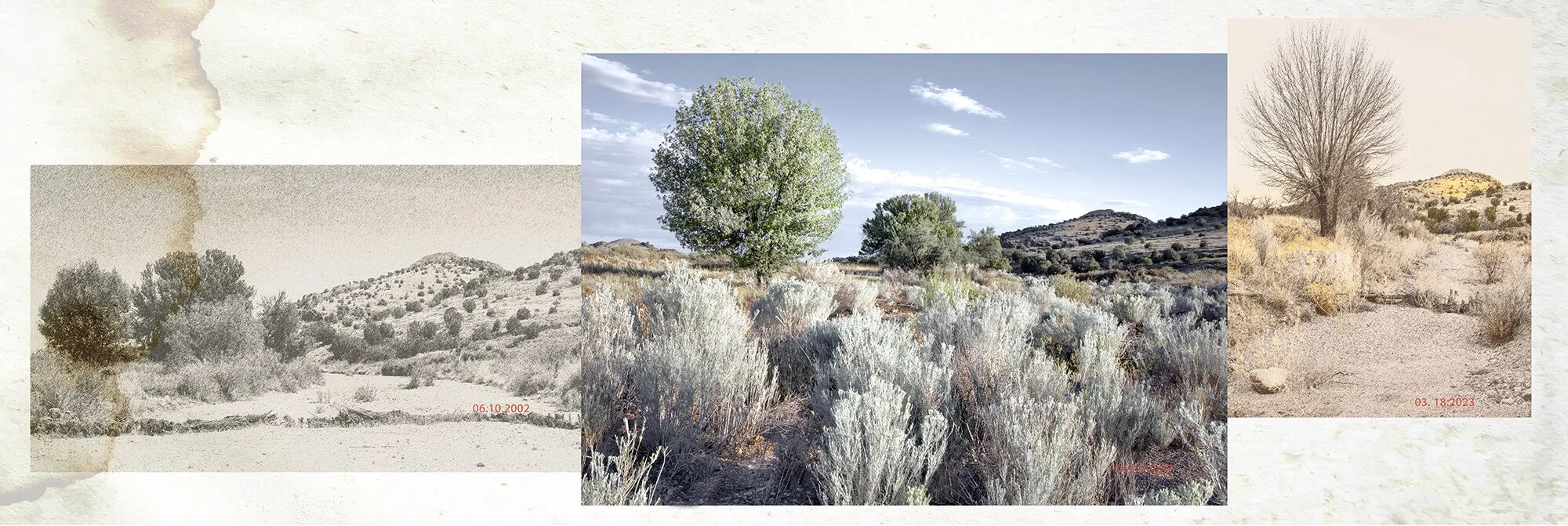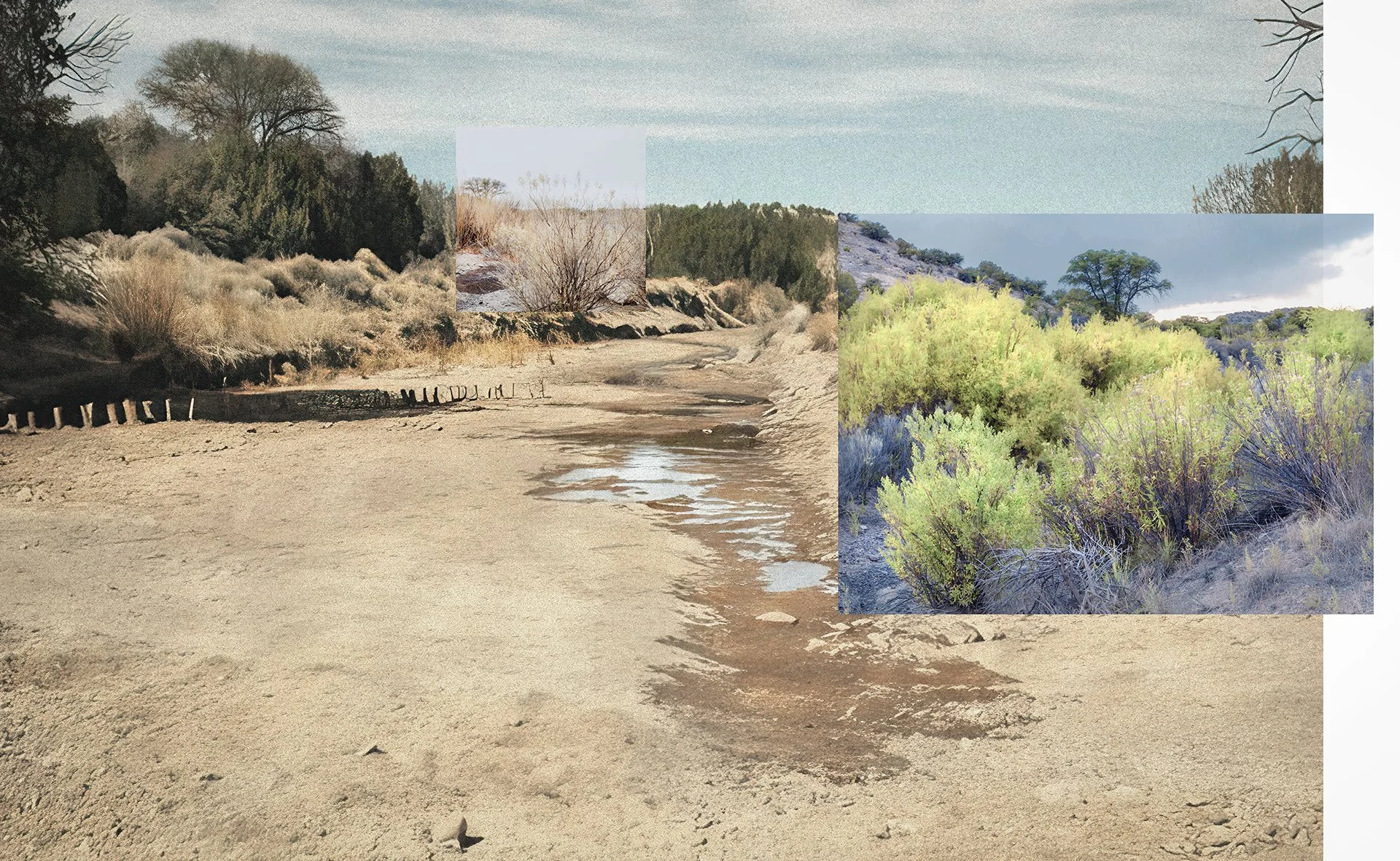WATER HAS MEMORY
The Return Of a Lost Desert Oasis
Burro Ciénaga
Three years ago, I met a couple who restored a nearly extinct spring-fed Ciénaga—a desert wetland unique to the Southwest— on their ranch, reversing a century of damage. They documented the land’s transformation with same-location photographs. I began collaging their pre-restoration images with my current ones, indicating dry past, a intermediate adaptation to more water and present abundance through layers and colors visualizing continuity, rupture, and transformation.
A desert wetland seems like a contradiction, yet the Southwest once was green. Their decline began with European colonization, when water was diverted, marshes drained, and landscapes overgrazed. Springs and Ciénagas—lifelines in arid lands—once supported biodiversity and cultural reverence but few remain due to climate change, over-extraction, and neglect.
Environmental loss is difficult to recognize because of the “shifting baseline” effect: each generation accepts the degraded environment it inherits as normal, forgetting past abundance. Such erasure, both physical and psychological, diminishes urgency for protection. By naming erosion, we acknowledge loss and open the way for restoration. This work grew out of my last series - HIDDEN WATERS: Endangered and Disappearing Desert Springs which uses photography as a witness of ecological memory.
Water Has Memory merges art and ecology, portraying endangered waters as altered yet enduring archives of human and natural history—sites still holding the possibility of renewal with the memory of water.
Site 10 North and Big Butte
Site 10 South with Prickly Pear Cactus
Bobby’s Crossing
Cooper’s Doubt
Inez Spring
Bubble Tree
Blue Bird and Tree
Site 10 South with Soldier’s Farewell







